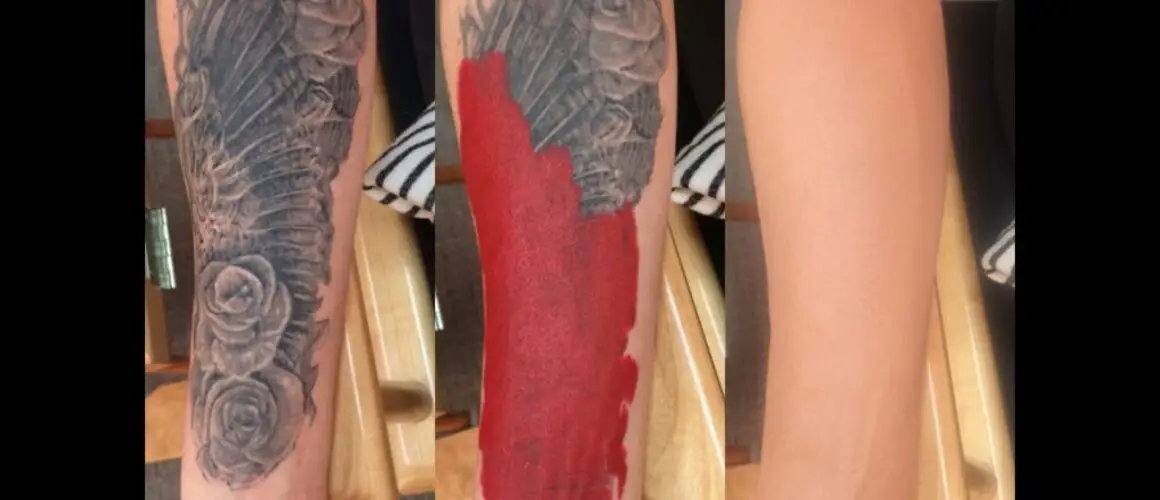How To Cover Up A Tattoo
If for some reason your current tattoo doesn’t appeal to you, you might consider concealing it with cover-up tattoos. Any tattoo can be covered up, although it may need to be faded with laser tattoo removal first (usually only 2-3 sessions are required). The design should be able to accommodate a large volume of black shading and can cover a wider coverage. With that, you must not get a tribal tattoo design as a cover-up as it will not simply work. Custom-made designs are an ideal option, but you can consult any design of your choice with your tattoo artist. Even if you have a large, solid black tattoo, a good cover-up tattoo artist will work with you to create a strategy for covering it with a new design you can get excited about.
FACTORS THAT AFFECT HOW TO GET A COVER-UP TATTOO
When considering a cover-up tattoo, the following factors will impact the process, the outcome, and ultimately, your satisfaction with the cover-up tattoo:
- Colour of the original tattoo. The lighter the colors and the softer the application of ink, the more leniency you will have when it comes to the color and design of your cover-up tattoo. Darker tattoos with heavy use of ink are harder to cover up than softer-colored tattoos with less ink. Bright color cover-ups are usually covering other brightwork! The bolder and darker you go the better the cover-up will be. For example, it would be easier to do a cover-up of a tattoo done in the watercolor style than it would be to cover up a traditional style tattoo. In cases where stronger colors are used, your artist may recommend a fading first.
- How old and faded the original tattoo is. Faded tattoos are easier to cover up because the ink has had some time to dissipate, leaving the artist with something closer to a blank canvas. Dimmer tattoos won’t require as many laser tattoo removal sessions before getting covered up.
- The design of the original tattoo. Tattoos with minimal coloration, no outlines, and graduated color covering a small surface area are the easiest to cover up.
- What do you want the cover-up tattoo design to be? Getting a cover-up tattoo does not afford you the same leniency as getting a new tattoo. It’s the difference between drawing a picture on a blank canvas and having an existing drawing to re-work and draw over – however, you can fade the existing tattoo to provide more range in terms of the design of the cover-up tattoo. The more complex the cover-up design, the more potential for your cover-up to turn out well.
- What if there are parts of the old tattoo that can be salvaged? Sometimes a cover-up tattoo doesn’t cover an existing tattoo but builds upon it. Embellishing and adding to an existing tattoo can lead to some truly breathtaking designs which don’t require a single laser tattoo removal session.
- The size of the original tattoo. Be prepared for your new cover-up tattoo to be larger than the existing tattoo. Sometimes the tattoo artist will need to expand the size in order to cover up existing outlines or to create the best possible design. Often tattoos that are designed as cover-ups are around thirty percent larger than the first tattoo. This way, the darker areas of the design can camouflage the old tattoo, and lighter colors can be used on virgin skin, deceiving the eye into believing the cover-up tattoo is the only tattoo that has ever been there.
- The maintenance of the cover-up tattoo. Depending on the original tattoo and the cover-up, you may need up to three touch-up sessions before your new tattoo is complete. Although your cover-up tattoo may look great when you leave the tattoo shop, the original design may peek through once the ink is settled. If this problem arises, a few touch-up sessions are all you need to get the tattoo you want.

Here’s our another How To article you may like: How to get inked and stay vegan